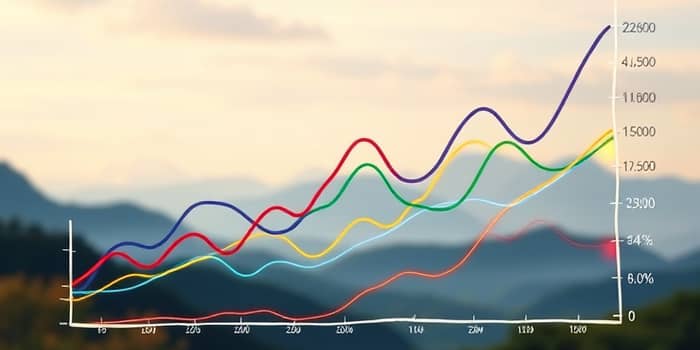
In an environment defined by fluctuating rates and shifting economic forces, yield curves offer powerful insights into market dynamics and guide strategic investment decisions.
A yield curve plots the interest rates of bonds with the same credit quality against their maturities. Typically, government bonds such as U.S. Treasuries are used, offering a nearly risk-free benchmark. The horizontal axis shows time to maturity—from short-term bills to multi-decade notes—while the vertical axis displays the yield or rate of return. By examining this curve, investors can infer market expectations regarding future rates, inflation trends, and potential economic growth.
Analysts view the yield curve as a leading indicator of economic cycles. Its shape shifts as traders price in monetary policy adjustments, global financial developments, and inflationary pressures. Mastery of these fundamentals empowers portfolio managers to anticipate interest rate exposure and adjust positions proactively.
The yield curve can assume three primary shapes, each reflecting distinct market sentiment:
Each shape conveys a distinct narrative. A normal curve speaks to expansion, an inverted one to contraction fears, and a flat profile to ambivalence. Recognizing these contours is critical for effective risk management.
Beyond mere graphical representation, yield curves embody the collective wisdom of market participants. An upward slope often reflects confidence in sustained growth and moderate inflation. Investors demand higher yields for longer maturities to compensate for future uncertainties.
Inversion, on the other hand, has historically preceded many recessions by 12 to 18 months. When short-term borrowing costs surpass long-term returns, it signals that traders expect future rate cuts and slowing activity. Flat curves emerge during policy transitions—central banks may be poised to tighten or loosen credit conditions, leaving investors momentarily unsure of the direction.
Navigating real yield data illuminates these concepts. Consider these representative figures:
These snapshots demonstrate how slight shifts in slope can dramatically alter the tenor of a portfolio. A few basis points can change the attractiveness of bond durations and influence risk assessments.
Quantitative models translate observed yields into actionable curves. A simple linear approach expresses yield as y(t) = y₀ + s·t, where y₀ is the base yield, s the slope, and t the maturity term. While intuitive, linear models lack nuance when curves exhibit humps or asymptotic behavior.
Advanced fitting uses frameworks like the Nelson-Siegel or Svensson models. These techniques employ exponential components and adjustable parameters to capture curvature and hump effects. By aligning model outputs with market data, risk managers derive smooth curves for scenario analysis, pricing, and hedging strategies.
Understanding curve shapes informs portfolio tactics. Below are common approaches:
Adapting these tactics to curve signals allows fund managers to optimize returns while containing portfolio risk under varying conditions. For instance, in an inverted market, overweighting shorter maturities preserves capital as yields compress.
Yield curves are more than academic constructs; they are dynamic maps charting the future of interest rates, inflation, and growth. By interpreting curve shapes—normal, inverted, or flat—investors gain a robust framework for decision making and can tailor strategies to prevailing conditions.
From simple linear models to sophisticated Nelson-Siegel fits, the tools at hand empower professionals to quantify exposure and anticipate market moves. Armed with numerical benchmarks and strategic playbooks, portfolio managers can navigate uncertainty, harness opportunities, and safeguard assets in an ever-evolving financial world.
References













